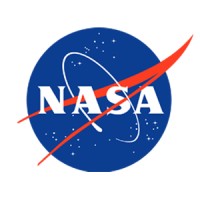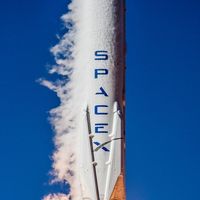The Space Race Reimagined: NASA and SpaceX in the Quest for Mars
March 5, 2025, 9:51 pm

Location: United States, Maryland, Greenbelt
Employees: 10001+
Founded date: 1958
Total raised: $25.7B

Location: United States, District of Columbia, Washington
Employees: 5001-10000
Founded date: 2002
Total raised: $7.53B
The race to Mars is heating up. Two titans stand at the forefront: NASA and SpaceX. One is a seasoned veteran, the other a bold innovator. Each has its own approach, strengths, and challenges. But the ultimate question looms: Who will land humans on Mars first?
NASA, the government-backed agency, has decades of experience. It has sent numerous robotic missions to Mars, gathering invaluable data. Yet, sending humans to the Red Planet is a different beast. It’s a leap into the unknown. NASA’s Artemis program aims to return humans to the Moon first. This lunar mission is a stepping stone. It’s about testing technologies and preparing astronauts for the deep-space journey ahead.
The Space Launch System (SLS) is NASA’s heavy lifter. It’s designed to carry astronauts and cargo beyond Earth’s orbit. But the SLS has faced delays and budget overruns. Critics question its viability. Still, NASA remains committed. The Orion spacecraft is another key player. It’s built to transport astronauts safely to Mars. Extensive testing is underway, but it’s not ready for long-duration missions yet.
NASA’s challenges are significant. Funding is unpredictable. Bureaucratic red tape slows progress. Developing sustainable habitats on Mars is a monumental task. Radiation protection for astronauts is another hurdle.
On the flip side, SpaceX is a private company with a singular mission: to make life multi-planetary. Elon Musk’s vision is audacious. He aims to colonize Mars, and he’s not shy about his timelines. SpaceX’s Starship is central to this plan. It’s designed to be fully reusable, capable of carrying over 100 people. This makes it ideal for Mars missions.
SpaceX operates with a speed that NASA can only dream of. The company tests, fails, and iterates rapidly. This approach allows for quick improvements. It’s a cycle of innovation that keeps pushing boundaries. Cost efficiency is another feather in SpaceX’s cap. By developing reusable rockets, they’ve slashed launch costs. This could make Mars missions economically viable.
However, SpaceX faces its own set of challenges. The Starship is still in development. It hasn’t yet proven its full operational capability. Funding for a Mars colony is a significant concern. The financial resources required are staggering. Life support systems for extended human survival on Mars are still in the experimental phase.
So, who has the advantage? NASA brings experience and scientific expertise. But it’s bogged down by funding issues and slow decision-making. SpaceX, on the other hand, is agile and innovative. Yet, it lacks the stability and regulatory support that NASA enjoys.
Projected timelines reveal a stark contrast. NASA aims to send astronauts to Mars in the late 2030s. SpaceX, however, has set its sights on landing humans on Mars within the next decade. Given SpaceX’s rapid development pace, it seems more likely to reach Mars first. But landing is just the beginning. Establishing a sustainable human presence on Mars is a different challenge altogether.
The future of Mars exploration may not be a solo endeavor. Collaboration could be the key. NASA’s scientific expertise combined with SpaceX’s innovative spirit could pave the way for success. A partnership could accelerate the timeline for human life on Mars.
The excitement surrounding Mars exploration is palpable. It’s a monumental step for humanity. Both NASA and SpaceX are pushing the envelope. They are not just competing; they are redefining what is possible.
As we look to the stars, the dream of becoming an interplanetary species inches closer. The race to Mars is not just about who gets there first. It’s about humanity’s collective journey into the cosmos.
In this new space race, the true winners will be all of us. Whether through competition or collaboration, the goal remains the same: to take our first steps on another planet. The dream of Mars is alive, and it’s more attainable than ever.
As we stand on the brink of this new frontier, the question is not just who will reach Mars first. It’s about how we will thrive there. The challenges are immense, but so are the possibilities. The journey to Mars is not just a race; it’s a leap into our future. The cosmos awaits.
NASA, the government-backed agency, has decades of experience. It has sent numerous robotic missions to Mars, gathering invaluable data. Yet, sending humans to the Red Planet is a different beast. It’s a leap into the unknown. NASA’s Artemis program aims to return humans to the Moon first. This lunar mission is a stepping stone. It’s about testing technologies and preparing astronauts for the deep-space journey ahead.
The Space Launch System (SLS) is NASA’s heavy lifter. It’s designed to carry astronauts and cargo beyond Earth’s orbit. But the SLS has faced delays and budget overruns. Critics question its viability. Still, NASA remains committed. The Orion spacecraft is another key player. It’s built to transport astronauts safely to Mars. Extensive testing is underway, but it’s not ready for long-duration missions yet.
NASA’s challenges are significant. Funding is unpredictable. Bureaucratic red tape slows progress. Developing sustainable habitats on Mars is a monumental task. Radiation protection for astronauts is another hurdle.
On the flip side, SpaceX is a private company with a singular mission: to make life multi-planetary. Elon Musk’s vision is audacious. He aims to colonize Mars, and he’s not shy about his timelines. SpaceX’s Starship is central to this plan. It’s designed to be fully reusable, capable of carrying over 100 people. This makes it ideal for Mars missions.
SpaceX operates with a speed that NASA can only dream of. The company tests, fails, and iterates rapidly. This approach allows for quick improvements. It’s a cycle of innovation that keeps pushing boundaries. Cost efficiency is another feather in SpaceX’s cap. By developing reusable rockets, they’ve slashed launch costs. This could make Mars missions economically viable.
However, SpaceX faces its own set of challenges. The Starship is still in development. It hasn’t yet proven its full operational capability. Funding for a Mars colony is a significant concern. The financial resources required are staggering. Life support systems for extended human survival on Mars are still in the experimental phase.
So, who has the advantage? NASA brings experience and scientific expertise. But it’s bogged down by funding issues and slow decision-making. SpaceX, on the other hand, is agile and innovative. Yet, it lacks the stability and regulatory support that NASA enjoys.
Projected timelines reveal a stark contrast. NASA aims to send astronauts to Mars in the late 2030s. SpaceX, however, has set its sights on landing humans on Mars within the next decade. Given SpaceX’s rapid development pace, it seems more likely to reach Mars first. But landing is just the beginning. Establishing a sustainable human presence on Mars is a different challenge altogether.
The future of Mars exploration may not be a solo endeavor. Collaboration could be the key. NASA’s scientific expertise combined with SpaceX’s innovative spirit could pave the way for success. A partnership could accelerate the timeline for human life on Mars.
The excitement surrounding Mars exploration is palpable. It’s a monumental step for humanity. Both NASA and SpaceX are pushing the envelope. They are not just competing; they are redefining what is possible.
As we look to the stars, the dream of becoming an interplanetary species inches closer. The race to Mars is not just about who gets there first. It’s about humanity’s collective journey into the cosmos.
In this new space race, the true winners will be all of us. Whether through competition or collaboration, the goal remains the same: to take our first steps on another planet. The dream of Mars is alive, and it’s more attainable than ever.
As we stand on the brink of this new frontier, the question is not just who will reach Mars first. It’s about how we will thrive there. The challenges are immense, but so are the possibilities. The journey to Mars is not just a race; it’s a leap into our future. The cosmos awaits.